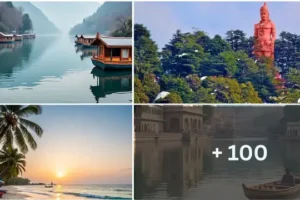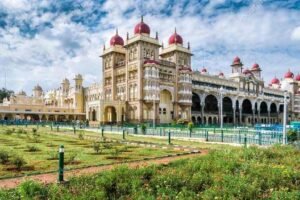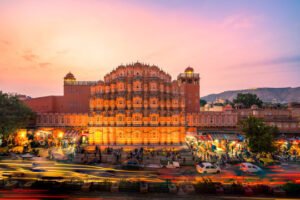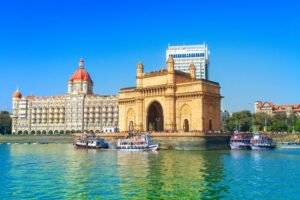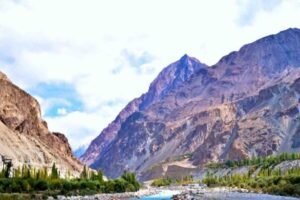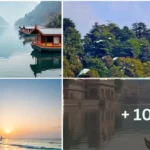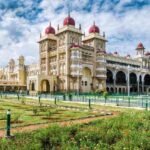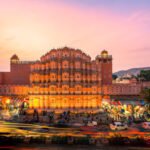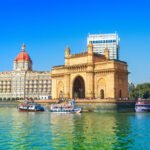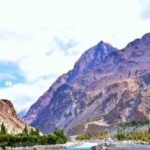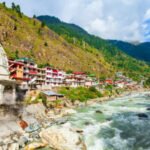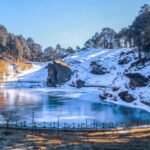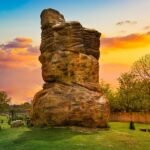Choti Kashi Mandi: The Land of Temples
Choti Kashi Mandi, literally translating to “Little Kashi” depicting name due to the abundance of ancient temples, particularly those dedicated to Lord Shiva, resembling the holy city of Varanasi, also known as Kashi. There are over 81 old stone temples scattered throughout Mandi, with some boasting exquisite carvings.
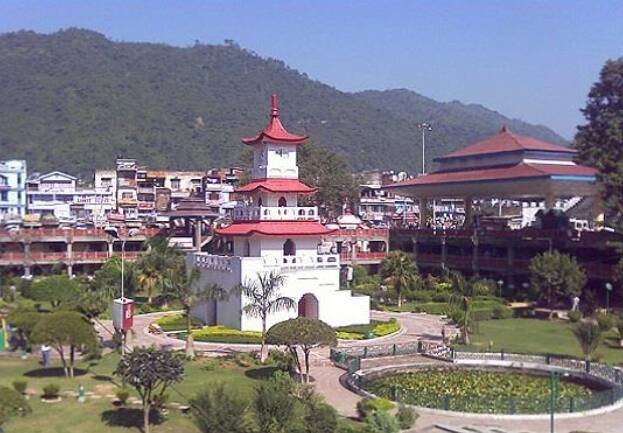
The town features notable examples of colonial architecture in its temples. Among the famous ones are the temples of Bhutnath, Trilokinath, Panchvaktra, and Shyamakali. Every year, Mandi hosts a week-long international Shivratri fair, drawing visitors from far and wide. The festivities celebrate Lord Shiva and add to the town’s spiritual significance. The majestic Victoria Bridge, built in 1877 by Raja Vijay Singh with British assistance, connects Purani Mandi and Choti Kashi Mandi.
Best Temples to visit in Choti Kashi Mandi
Baba Bhootnath Mandir
The Bhootnath Temple is an ancient Hindu temple dedicated to Lord Shiva.It was built in 1527 AD by Raja Ajber Sen, around the same time the capital of Mandi state was shifted from Bhiuli to its current location.

The temple is a popular tourist destination known for its Shikhara style architecture and intricate stone carvings. Legend has it that the deity Raj Madhav Rao, along with visiting hill deities, pays respects at the Bhootnath Temple before the procession for the Maha Shivratri festival begins. Its located in the main market of Chowata Bazar in Choti Kashi Mandi.
The temple is generally open from dawn to dusk (around 5 AM to 8 PM). However, specific timings for darshan (holy visit) can vary. It’s best to check with the temple authorities or your local guide for the most up-to-date information.
Apart from offering prayers, you can admire the temple’s architecture and carvings. You can also visit other nearby temples like Trilokinath Temple, Panchvaktra Temple, Tarna Devi Temple, and Shyama Kali Temple.
Panchvaktra Temple
The Panchvaktra temple is most famous for its enshrined five-faced statue of Lord Shiva, which is what gives the temple its name. Panchvaktra translates to “five faces” and the five faces of the statue represent the different aspects of Lord Shiva. These aspects are Aghora (destructive nature), Ishana (omnipresent and omnipotent), Tat Purusha (ego), Vaamdeva (female facet), and Rudra (creative and destructive aspect).
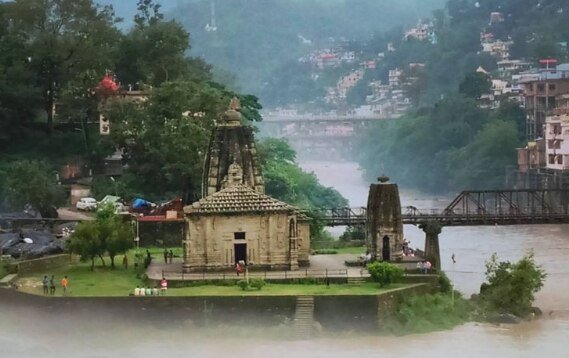
Panchvaktra temple is an ancient Hindu temple dedicated to Lord Shiva located in Choti Kashi Mandi, Himachal Pradesh, India. It is situated at the confluence of the Beas and Suketi Rivers, making for a beautiful and serene location.
In the peak monsoon temple itself will get submerged with water from beas river and suket khad. This happens every monsoon and there is no damage to the temple during this time and it became a legend of Lord Shiva.
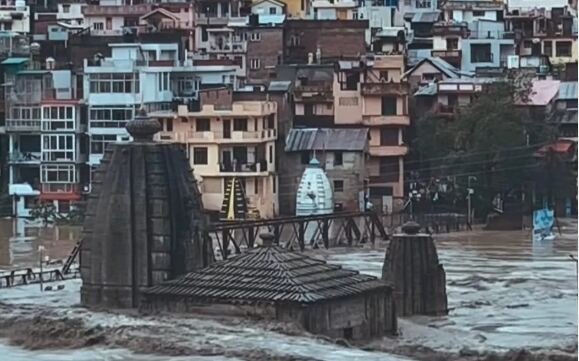
Built in the typical Shikhara architecture style, the temple stands on a massive platform supported by four finely carved stone pillars. Inside, you’ll find a colossal five-faced idol of Bhagwan Shiva, representing various aspects: Aghora, Ishaan, Tat Purush, Vamadeva, and Rudra. Panchavaktra signifies the union of all these forms.
Bhima Kali Temple
Bhima Kali Temple legend is said to believed that this is the sight where Lord Krishna fought with the demon Banasura. The myth further says that the head of the routed king Banasura was buried in the facade of the entry gate of the temple. The temple is known for its beautiful wooden architecture and intricate carvings. There is a large museum inside the temple which exhibits the exclusive images of Hindu Gods and Goddesses. Kali Puja is celebrated here with great zeal and enthusiasm. There is also a festival called Udyapan Jag which is celebrated once every 100 years.
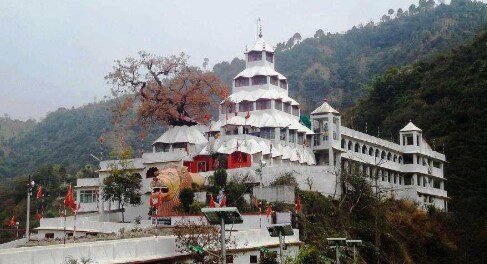
Bhima Kali Temple, situated on the banks of the Beas River in Choti Kashi Mandi District of Himachal Pradesh. Bhima Kali Temple is devoted to Goddess Bhima Kali. Goddess Bhima Kali is considered to be the family deity of the erstwhile Bushahar Rulers of Choti Kashi Mandi. Kali Mata is the aspect of Durga Mata and is so widely worshiped in north eastern parts of India.
Temple consists of the huge park with different slides, swings and many more things to play for the children. There are lots of benches to sit and enjoy the serene view of the temple. You can also walk around the in the huge ground in the temple, there are walkways in the ground to walk around the temple.
Ekadash Rudra Temple
Ekadash Rudra Mahadev Temple is the second temple in India in which 11 Shivalingas are present together. This is the only temple in North India which is built on the Panchdev worship system according to Sanatan Dharma. Lord Bholenath is present in the form of eleventh Rudra Mahadev in the sanctum sanctorum of the temple. There are four temples located on the parikrama route of the same temple. Among these, the first temple is of Sun God, the second is the temple of Shri Ganesh, Tripura Sundari and the fourth is the temple of Lord Satyanarayan.
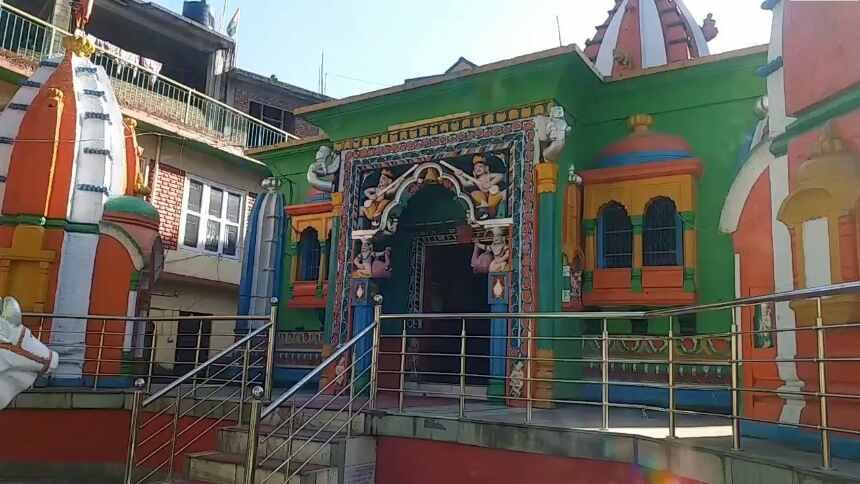
Choti Kashi Mandi is famous for its ancient temples and divine culture. Shivratri festival is celebrated in Mandi district since the princely times. In which all the gods and goddesses of the district reach the Shivratri festival with drums and drums. This time Shivratri festival will be celebrated in Choti Kashi Mandi from 18th to 25th February. One week before the Shivratri festival, continuous chanting of Om Namah Shivay will be done in the ancient Ekadash Rudra temple situated on the banks of river Vyas.
Deputy Commissioner Mandi inaugurated it by lighting the lamp on 12th February at 9:00 am. During this period, from 12th February to 18th February, the eternal flame will remain burning day and night in the temple and the chanting of Om Namah Shivay will also continue.
Baba Maha Mrintunjay Shiv Temple
The Baba Maha Mritunjay Shiv Temple is a renowned Hindu temple dedicated to Lord Shiva, located in Choti Kashi Mandi, Himachal Pradesh, India. It’s known for its unique idol of Lord Shiva and is claimed to be the only Shiva temple in Asia where the Lord’s facial expressions change five times a day.
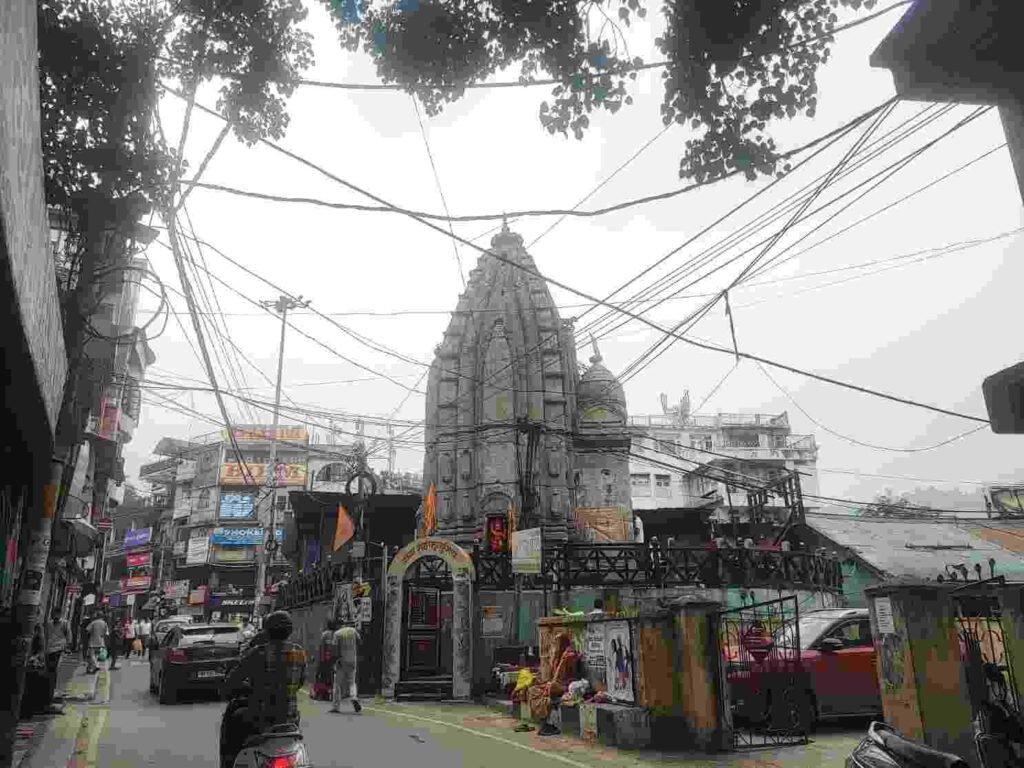
Mahamrityunjaya Temple in Choti Kashi Mandi is one of the oldest Lord Shiva temples in Himachal Pradesh, India. The temple is one of the rare temples where Lord Shiva is worshiped as Tryambaka, the three-eyed one. The idol of Shiva is installed in lotus posture in meditative contemplation with four arms. The right upper hand is raised to bless the devotees, the upper left hand holds the “Amrit Kalasa”, the right lower hand is in Bhumisparsha Mudra (gesture of touching the earth) and the lower left hand holds the “Kamandalu”. It is believed that worshiping Mahadeva at Mahamritunjya Temple will help to get rid of illness and get blessing for a healthy long life.
Mata Shyama Kali Temple, Tarna
Mata Shyama Kali Temple is dedicated to Goddess Shyama Kali, considered an incarnation of Goddess Parvati. According to legend, Goddess Parvati once danced with such vigor here that the earth began to shake. To appease her, Lord Shiva manifested himself. The temple is believed to have been built in the 17th century.
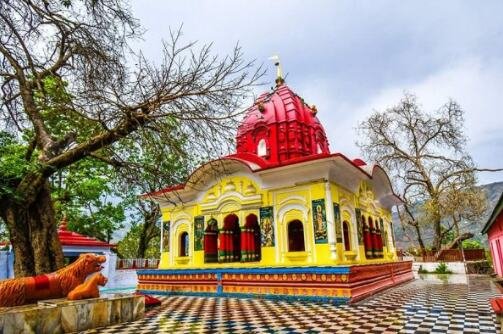
Mata Shyama Kali Temple, also known as Tarna Devi Temple, is a sacred Hindu temple located in Choti Kashi Mandi, Himachal Pradesh, India. It is perched atop Tarna Hill, offering stunning panoramic views of the surrounding landscape, including the dense forests and snow-capped mountains.
Devotees visit the temple from far and wide to seek blessings from Goddess Shyama Kali. The three-faced idol of the goddess Kali and Mahishasurmardini is a sight to behold. The temple walls are adorned with beautiful paintings depicting various deities and gurus.
Madhav Rai Mandir
Madhav Rai temple’s construction and idol formation are believed to date back to the reign of Raja Suraj Sen (1637-1664 AD). Legend says that King Suraj Sen had 18 sons, but all of them died during his lifetime. Following the advice of his priests, the king commissioned the idol of Lord Madhav Rai to be made of silver.
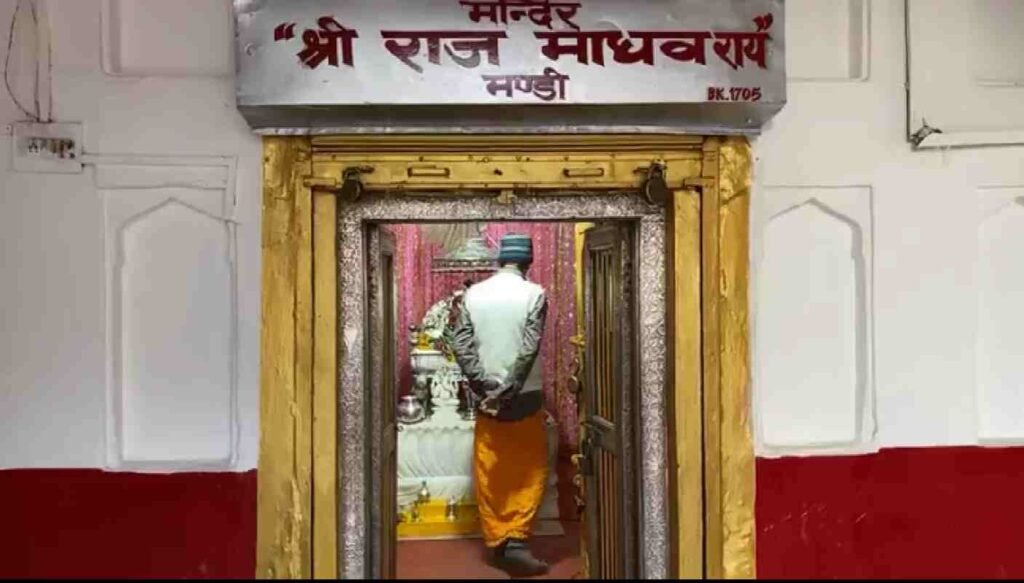
The Madhav Rai Mandir is a Hindu temple dedicated to Lord Madhav Rai, a form of Lord Vishnu, located in Choti Kashi Mandi. There is a local legend that the procession of Shivratri festival does not start until the palanquin of Madhav Rai, the king of Mandi city, comes out. Raj Madhav Rai is the form of Lord Vishnu or rather Lord Krishna. Choti Kashi’s Mandi Shivratri is internationally famous as a festival of lord Shiva.
Shri Trilokinath Temple
Trilokinath which has Lord Shiva as its presiding deity. Located in Choti Kashi Mandi and only a kilometer away from the main Choti Kashi Mandi bus stand. Legend has it that Sultan Devi, a 16th century queen, commissioned the construction of this temple.
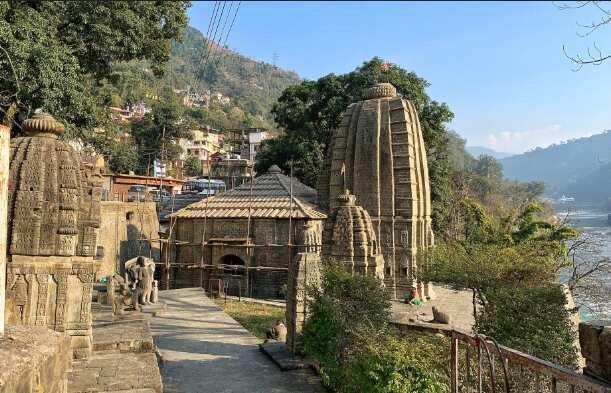
The idol of Lord Shiva has three faces signifying three different directions; therefore, it has been named as Trilokinath or Lord of the Three Worlds. Here, Lord Shiva is seated at the back of his celestial bull, Nandi, and is accompanied by his divine spouse Devi Parvati.
The temple is situated on the bank of Beas River on the Old Victoria Bridge along Mandi Pathankot National Highway. Overall, it is a clean and well-maintained temple shrine replete with impressive architecture and abundant peace for one and all.
Sidh Ganpati Temple
The Sidh Ganpati Temple is a beautiful and serene place. The temple complex is relatively small, but it has a peaceful atmosphere. The main idol of Lord Ganesha is decorated with vermillion and flowers. There is also a small shrine dedicated to Lord Shiva.
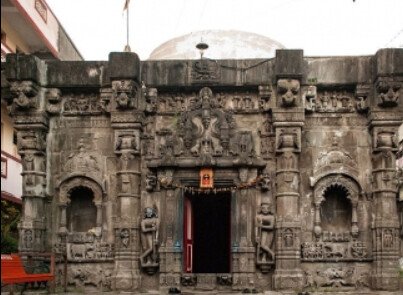
The Sidh Ganpati Temple is a popular Hindu temple located near the Regional Hospital of Choti Kashi Mandi, Himachal Pradesh. It is dedicated to Lord Ganesha, the remover of obstacles and the god of good beginnings. It is the only temple dedicated to lord Ganesha in Choti Kashi Mandi.
The temple was built by Raja Sidh Sen, a former king of Mandi. According to local belief, the king’s tantric priest used to meditate here. Whereas Siddhi Sen erected the temple, so the temple was known as by the name of King. The temple is believed to be particularly auspicious, and many devotees visit it to seek blessings before starting any new venture.
The temple is open to visitors every day. However, the best time to visit is during the Ganesh Chaturthi festival, which is celebrated in the month of August or September. During this time, the temple is decorated with flowers and lights, and there are special pujas (prayers) held every day. A fair is also held at the temple during this time.
Durga Mata Mandir, DhansiDhar
Durga Mata Mandir (Dhansi Dhar) is located on Dhansi Dhar Hill, offering panoramic views of Choti Kashi Mandi. It’s a popular temple dedicated to Durga Mata and is known for its peaceful ambiance and serene view of the area with amazing weather.
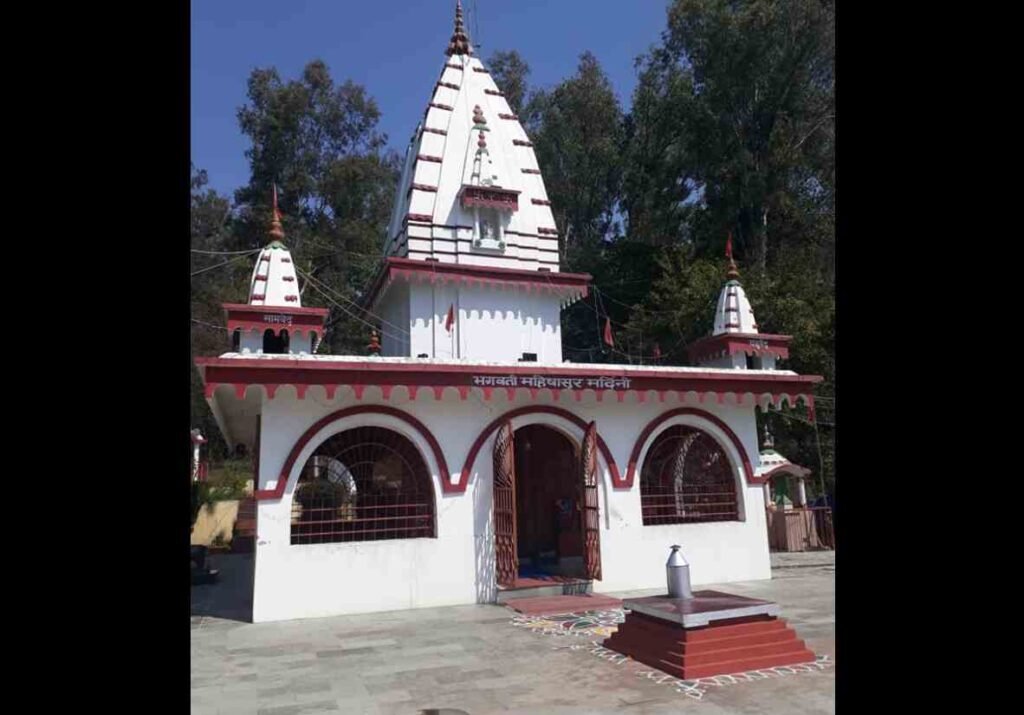
Durga Mata Temple is really famous temple of Choti Kashi Mandi. This temple is really old and known for it’s huge cultural influence in Choti Kashi Mandi. The Temple also offers cafe in the premises to enjoy food and drinks while enjoying the view. Temple also has vehicle parking facilities free of charge so you can reach their via any small vehicle like cars and bikes.
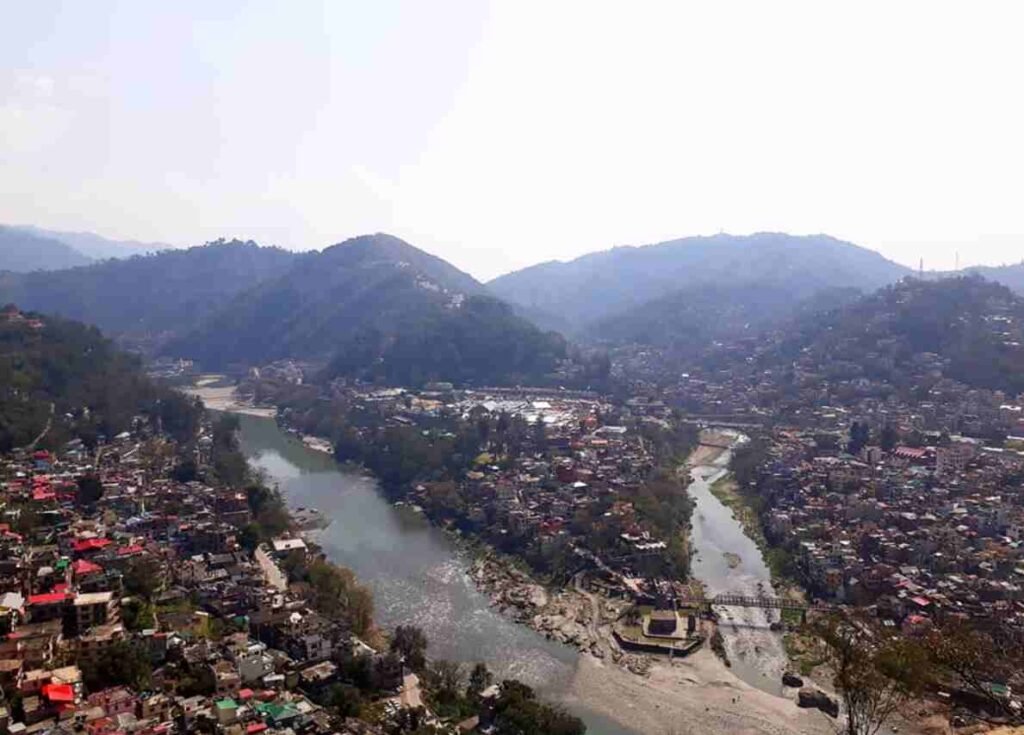
Temple also has a park for kids to enjoy. Park offer a fountain with light show at night and huge area to walk in the fresh air of the temple. The Park also has open gym equipment’s installed if you are interested in those and you can enjoy your time while exercising.
Entering the temple you will find a path with trees on both sides leading to main area. This temple is really famous for its Navratri Nav Durga Pujja and there is huge local crowd in the temple at the ninth day of the navratri when Kanya Pujan is done. Lots of girls are also present there for the local people to worship as durga mata, following the local beliefs.
What is special about Mandi, Himachal Pradesh?
Due to its temple architecture, old palaces and rich traditions, Choti Kashi Mandi is often considered the cultural capital of the state. Every year in February–March, a week-long festival of Shivratri is celebrated, when the entire city takes on a decorative look.
How many temples are there in Mandi, Himachal Pradesh?
You will find thousands of old and new temples in Mandi district. People of Choti Kashi Mandi proudly say that there are 80 temples in Banaras (Kashi), whereas the small town of Mandi itself has 81 temples. Mandi is known for its 81 old stone temples and is often called the ‘Choti Kashi’.
Why is Mandi famous?
The city was founded in 1527 by Ajbar Sen as the seat of Mandi State, which was a princely state until 1948. The foundation of the city was laid upon the establishment of Himachal Pradesh in early 1948. Today, it is widely known for the international Shivratri fair. Mandi is also the first heritage city of Himachal Pradesh.
Is Mandi a good place to live?
Choti Kashi Mandi is a good place to live. The city is quite clean and has amazing natural beauty of the mountains. You will always wake up seeing mountains.
Which river flows in Mandi?
Choti Kashi Mandi is built on the banks of river Beas at the confluence of Suketi Khad stream.
Who is the king of Mandi Himachal Pradesh?
Raja Ashok Pal Sen belonged to this dynasty. The princely states of Mandi and Suket remained under the political control of the Government of India until India gained independence. After Himachal Pradesh came into existence as a separate state, on 15 April 1948, both the princely states of Mandi and Suket were merged and made it a state.
What is Choti Kashi?
Choti Kashi is a name give to Mandi, Himachal Pradesh as it resembles Varanasi having 81 temples.
What is the best time to visit Mandi?
The best time to visit Mandi is from March to May, as the weather in Mandi remains pleasant during these months. Sometimes snowfall also occurs in this city, which you can enjoy during the winter season.
Where is Choti Kashi Mandi located?
Choti Kashi Mandi is located at the banks of Beas river and confluence of Suket Khad Stream in the state of Himachal Pradesh, India.
What is the old name of Mandi?
The ancient name of this city is Mandava Nagar and Tibetan name is Jahore. This city is also considered the religious and cultural center of Himachal. It is said that the great saint Mandava did penance sitting on a stone called Kolsara situated on the banks of river Beas, he had many supernatural powers and also had the knowledge of many scriptures.
